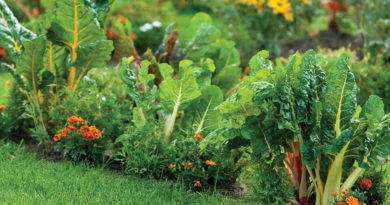Determining the Best Time to Harvest Your Buds
Through each and every stage of growth, you’ve worked hard to give your cannabis plants exactly what they need to thrive. The due diligence is starting to pay off as the buds continue to fill in and grow bigger and bigger.
The smell of success is quite literally just ahead of you and growing right in front of your eyes. The anticipation has been growing right along with the plants themselves, and you are so ready to just cut those ladies down to enjoy the fruits (or flowers) of your labor.
But not so fast.
Email Newsletter
Join thousands of other growers who are already receiving our monthly newsletter.
For this is one of the most important parts of the growing cycle and to finish strong, one must have patience and the proper eye to know when the flowers are at their peak ripeness. To achieve a notably successful harvest, a grower must understand how to read the plants and determine when they are truly ready.
Timing is Crucial
When it comes to harvesting cannabis, the bottom line is timing.
Timing is truly everything and missing the appropriate window for harvest can result in a less-than-desirable product. When harvested too early, the plant’s flowers may not be fully mature and will be lacking the oils and terpenes that give the buds their signature aromas, flavors, and cannabinoid profile (the tetrahydrocannabinol [THC] to cannabidiol [CBD] ratio). Plants harvested in the earlier stages of flowering will have a lower THC content and the effects will not be as potent.
On the other hand, when cannabis flowers are left to mature for too long the THC will begin to degrade or convert into cannabinol (CBN), which will give the end product a much more sedative-like effect, often referred to as “couch lock.”
It all boils down to the type of effect desired. When picked earlier in the harvest window, the plants will offer a more uplifting, clear-headed high compared to buds that were allowed to grow and mature for a longer period of time.
When determining the best time to harvest, try to avoid relying too heavily on the seed or clone provider’s literature about maturity time frames. Those are simply general recommendations and may not be completely accurate as things like transplant or heat stress can slow down growth processes.
Instead, the grower should be aware of each plant’s progress and use her eyes to help determine when the buds are ready. Here is how to do so:
Determining Readiness
There are two time-tested ways growers can use to determine when their plants are ready to harvest: monitoring the color of the pistils and tracking changes in trichomes.
Pistil Color
The first method is to watch the pistils and track them as they change colors. Pistils are the hair-like structures that protrude out from the flower bud. The purpose of the pistil is to catch the pollen from a male plant so the female plant can develop seeds to reproduce.
Since there shouldn’t be any male plants around (unless the grower is breeding them), the pistils can be used to determine the maturity of the cannabis flower. Pistils start off as white and tend to stick straight out from the developing flower.
As time goes by and the flowers mature, the pistils will begin to change from white to a brownish-orange or golden color, and then ultimately to a darker brown or reddish color. These colors may differ slightly with each individual variety but the idea remains the same.
For an end product with a higher THC content that delivers a more uplifted cerebral feeling, the buds should be harvested when 40-60 percent of the pistils have changed from their initial white color to the brownish-orange or golden color stage. These colors indicate the plant is in peak THC production mode.
If a stronger, more sedative-like effect is desired, the buds shouldn’t be harvested until around 70-90 percent of the pistils have been allowed to change color, at which point the THC will start converting to CBN and the pistils will begin to take on the darker brown or reddish color.
Trichome Changes
Another, perhaps more precise, method for determining when plants are ready to harvest is by closely monitoring the progression of change in the trichomes themselves.
Trichomes are glandular structures that grow out from the leaves and give the buds their crystal-like appearance. When viewed up close they look like tiny, slender little mushrooms.
The bulb-shaped tips of the trichome is where THC and CBD, resin oils, and aromatic terpenes are created and stored. These tiny structures not only give the buds their signature effects, appearance, and aroma, they can also be used to track a plant’s progress.
Similar to pistils, the appearances of the trichomes will change as the flowers mature. When they first present themselves, the trichomes will be completely clear. At this point, the cannabis has yet to reach maturity. As the flowers develop and ripen, the trichomes will begin to change in appearance. After the clear stage, they will transition, becoming more cloudy or opaque. This signifies an increase in cannabinoid production.
When 80-90 percent of the trichomes reach the cloudy or opaque stage, the production of THC is at its highest and the plants are ready to harvest. If harvested at this point the buds will deliver a more uplifted, cerebral high. As was the case with the pistils, if the plants are allowed to continue growing after this point, the trichomes will begin to turn amber in color as the THC degrades or converts into CBN.
When more trichomes change to amber, the harvested bud will have a stronger, more sedative-like effect. To limit the amount of THC converting into CBN, the flowers should be harvested before five to 10 percent of the trichomes turn amber in color.
The one difficulty with this method is that trichomes are much smaller than pistils, making them harder to inspect. To accurately determine their appearance, make sure to use some sort of a magnification device. Also, keep in mind the colors may vary a bit with each different plant variety but the underlining concept will remain the same.
Patience is Key
The most important advice I can give regarding the right time to harvest is to remain patient. It takes a lot of time and effort to get to this point.
Taking the proper care to harvest at just the right time will result in an end-product that not only looks great, but also has a better aroma and taste.
In the end, a little patience will pay off in a big way.




